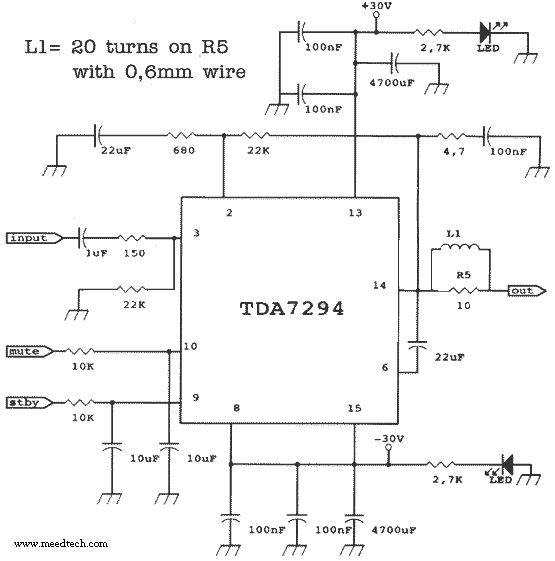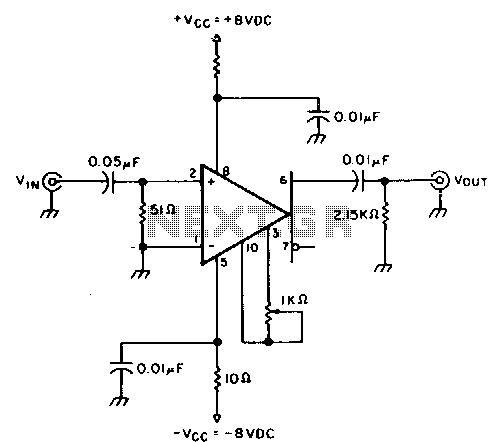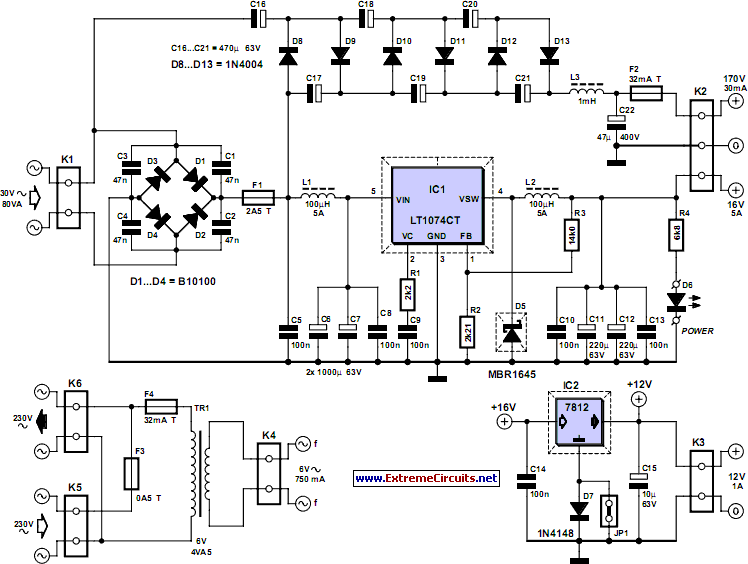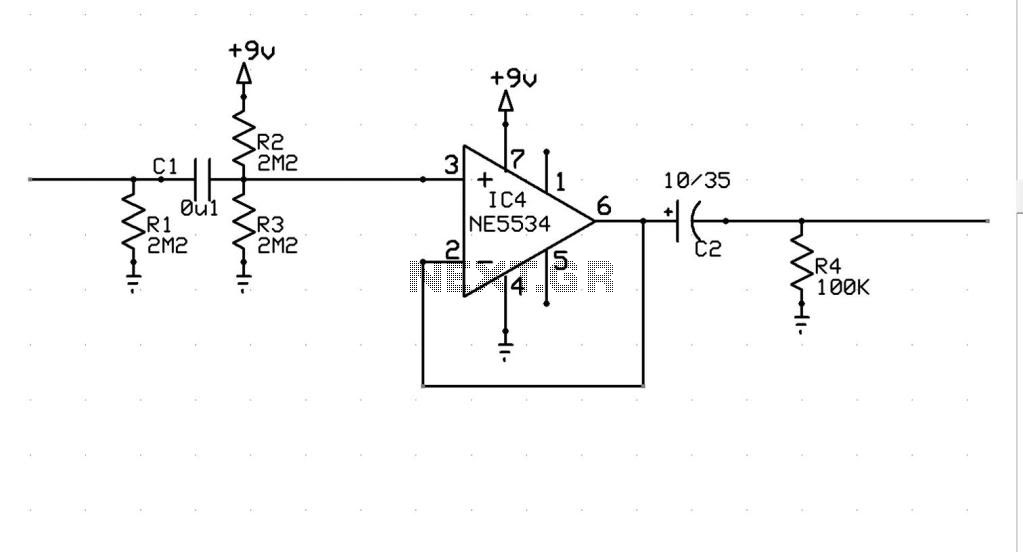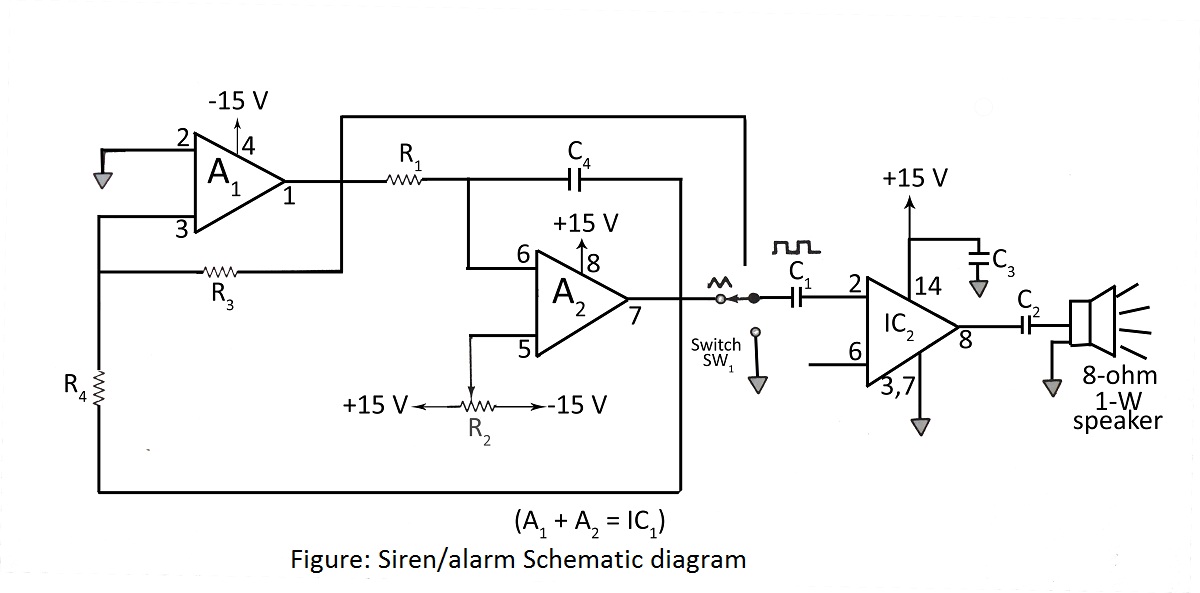
Bootstrapped Amp Current Source
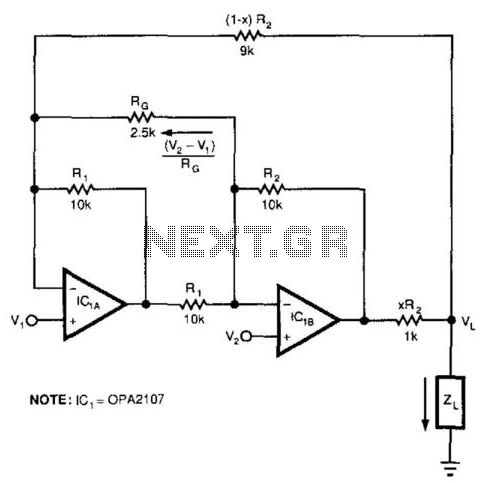
This circuit responds to the difference between Vj and V2. Rq sets the gain. Resistors XR2 and (1 - X) R2 produce the bootstrap effect. These two resistors convert the circuit's output voltage to a current. IC1 and IC2 are Burr-Brown OPA2107 or equivalent.
The described circuit operates as a differential amplifier, utilizing the voltage difference between inputs Vj and V2 to produce an amplified output. Resistor Rq plays a crucial role in determining the gain of the amplifier; its value can be adjusted to achieve the desired amplification level. The resistors XR2 and (1 - X) R2 are configured to implement a bootstrap effect, which helps to stabilize the output and improve linearity by reducing the influence of variations in load conditions.
The bootstrap effect is achieved through the careful selection of these resistors, which allows the output voltage to be converted into a corresponding output current. This conversion is essential for driving subsequent stages of the circuit, ensuring that the output remains consistent despite changes in load. The Burr-Brown OPA2107 operational amplifiers (IC1 and IC2) are chosen for their high precision and low noise characteristics, making them suitable for applications requiring accurate signal processing.
In summary, this circuit effectively amplifies the difference between two input voltages while providing stability and linearity through the use of strategically placed resistors and high-performance operational amplifiers. The design is well-suited for applications in instrumentation and signal conditioning, where precise voltage measurements are critical. This circuit responds to the difference between Vj and V2. Rq on sets gain. Resistors XR2 and (1 -X) R2 pro duce the bootstrap effect. These two resistors convert the circuit"s output voltage to a current. IC1 and IC2 are Burr-Brown OPA2107 or equal. 🔗 External reference
The described circuit operates as a differential amplifier, utilizing the voltage difference between inputs Vj and V2 to produce an amplified output. Resistor Rq plays a crucial role in determining the gain of the amplifier; its value can be adjusted to achieve the desired amplification level. The resistors XR2 and (1 - X) R2 are configured to implement a bootstrap effect, which helps to stabilize the output and improve linearity by reducing the influence of variations in load conditions.
The bootstrap effect is achieved through the careful selection of these resistors, which allows the output voltage to be converted into a corresponding output current. This conversion is essential for driving subsequent stages of the circuit, ensuring that the output remains consistent despite changes in load. The Burr-Brown OPA2107 operational amplifiers (IC1 and IC2) are chosen for their high precision and low noise characteristics, making them suitable for applications requiring accurate signal processing.
In summary, this circuit effectively amplifies the difference between two input voltages while providing stability and linearity through the use of strategically placed resistors and high-performance operational amplifiers. The design is well-suited for applications in instrumentation and signal conditioning, where precise voltage measurements are critical. This circuit responds to the difference between Vj and V2. Rq on sets gain. Resistors XR2 and (1 -X) R2 pro duce the bootstrap effect. These two resistors convert the circuit"s output voltage to a current. IC1 and IC2 are Burr-Brown OPA2107 or equal. 🔗 External reference
